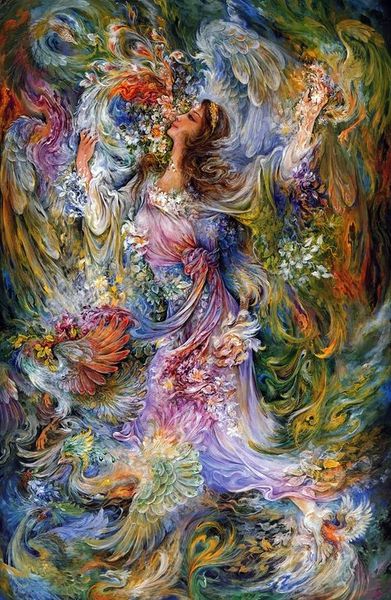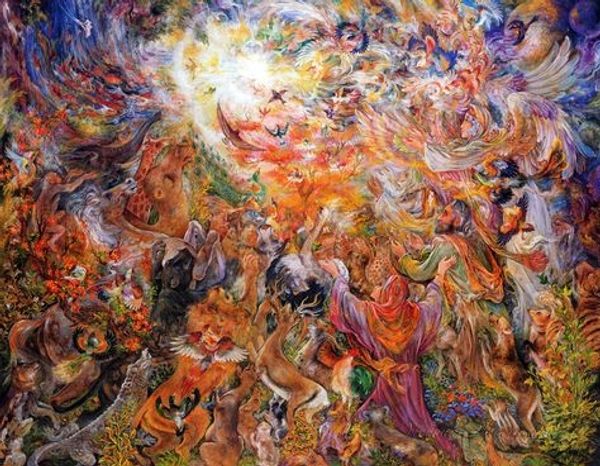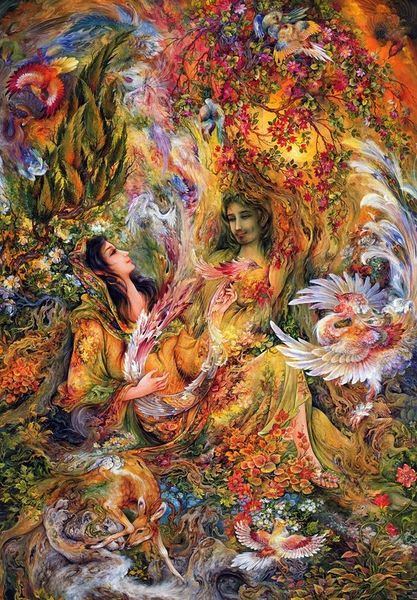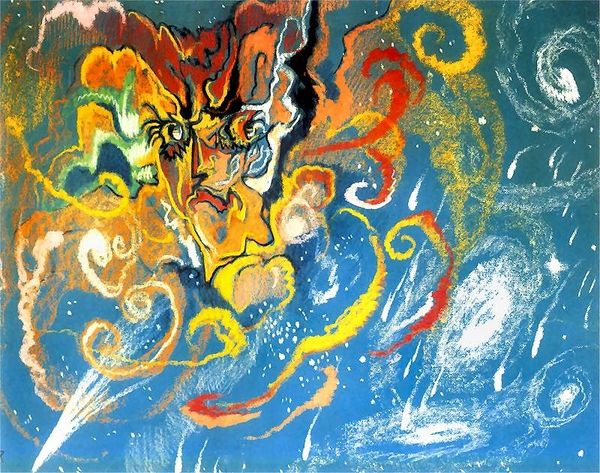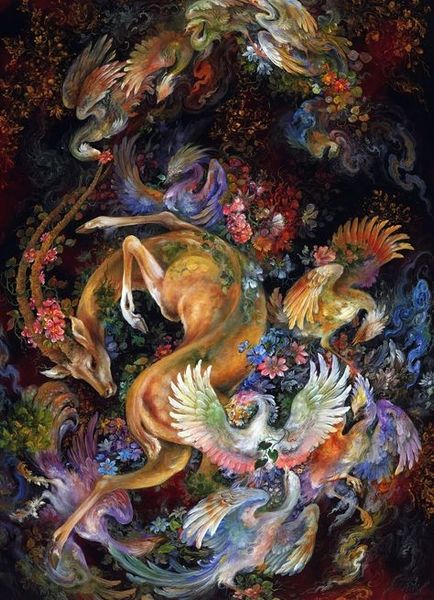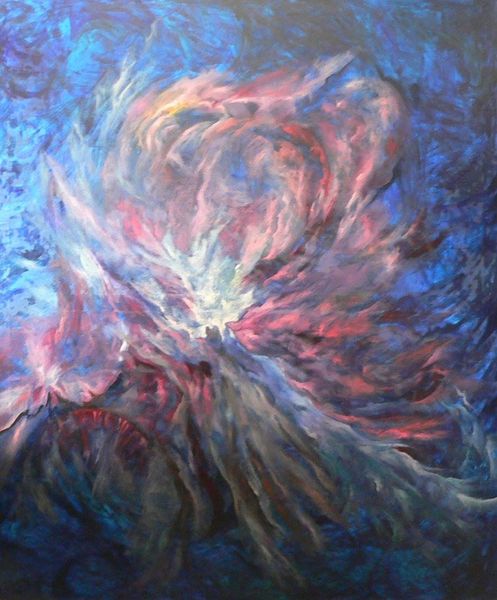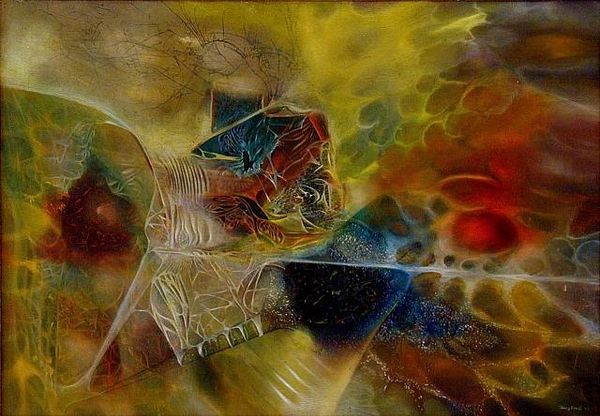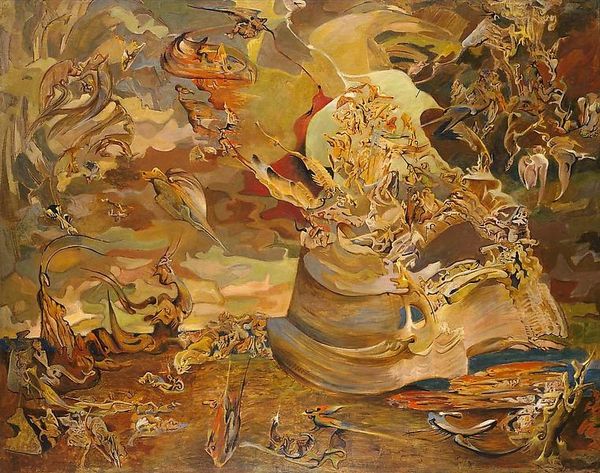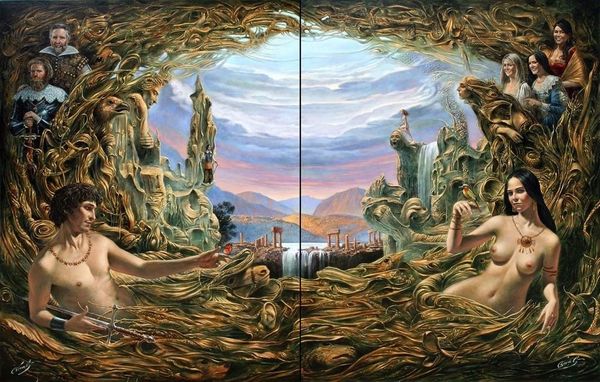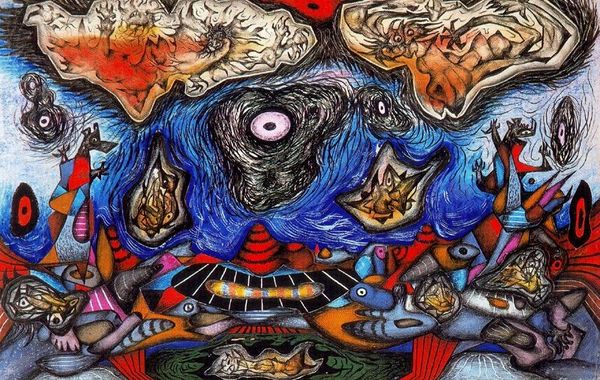
tempera, painting
#
portrait
#
narrative-art
#
tempera
#
painting
#
fantasy-art
#
figuration
#
acrylic on canvas
#
mythology
#
islamic-art
#
miniature
Copyright: Mahmoud Farshchian,Fair Use
Art Historian: Editor: Hello, everyone, and welcome. We’re looking at an untitled piece, probably from the late 20th or early 21st century, by Mahmoud Farshchian. It appears to be tempera on a board or perhaps canvas, in the style of a Persian miniature. It feels very dreamlike, almost like a myth being brought to life, yet it is unsettling with the depiction of the tied-up man and his imminent departure. How do you interpret this work? Art Historian: Well, that's fascinating to consider. Let’s explore the materiality of this piece and the cultural context surrounding it. I am drawn to the fact that it's rendered using tempera—what effect does using such material have on its making, particularly with the tradition of Islamic miniature paintings which has a specific process in how materials are chosen and manufactured? Does the artwork’s composition, with its almost crowded figuration and fantastical setting, point to a specific patronage? Could this level of detail have only been accessible to the upper class, suggesting specific themes or ideology being promoted? Editor: I hadn’t considered the patronage aspect. Is there any further information about how tempera paint might have impacted its accessibility, given that tempera can also be done without an animal base (such as egg)? Art Historian: The method through which materials like tempera were mixed with eggs affected the price of the piece. High-ranking families would purchase such materials and keep them out of reach from public trade to make them rare, impacting who had access to the final art piece. Let's reflect on how the method of production impacts our understanding and the value of Farshchian’s creation. Editor: I now recognize how a deeper material investigation adds additional historical, cultural, and political layers for consideration when interpreting this piece. Art Historian: Indeed, appreciating such nuances in materiality, labor and reception enables us to have a far better insight.
Comments
No comments
Be the first to comment and join the conversation on the ultimate creative platform.

